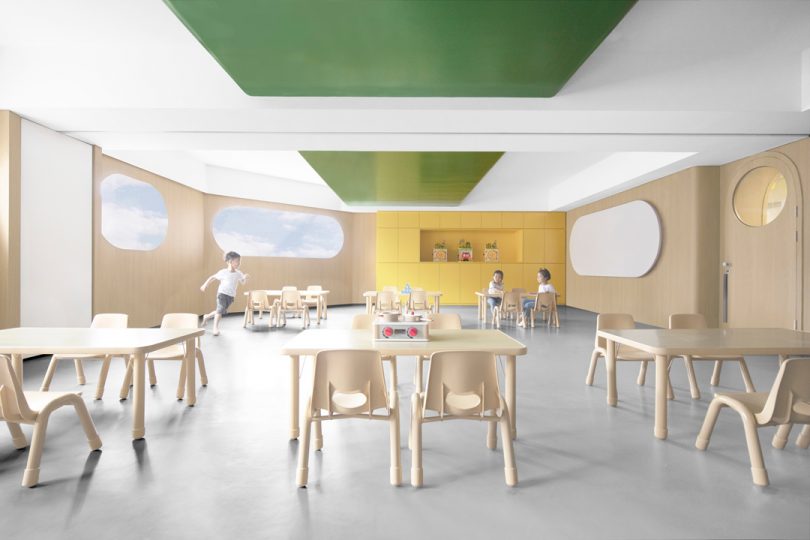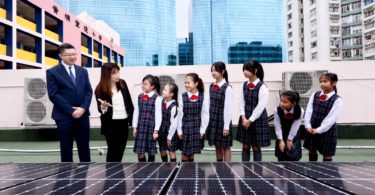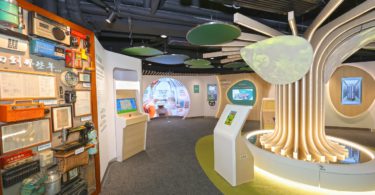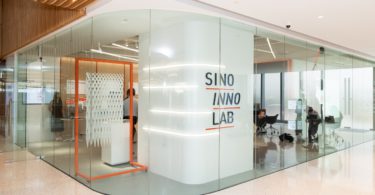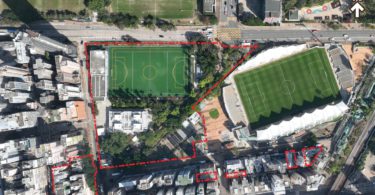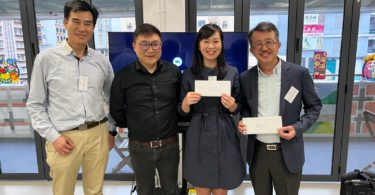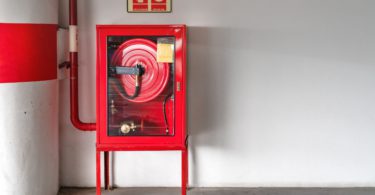Homogeneity of children’s education methods is affecting to the lack of recreational facilities, venues and the shortage of young educators. In order to adapt to the children’s educational environment in China, a systematic research and analysis has been conducted in order to come up with an architectural design that can cater for the new teaching method.
Based on the pyramid method proposed by Dutch educator Van Kuyk, the design of Poan Education in Fujian accommodates the traditional teaching model with a mixture of both holistic and sequential approaches.
The project is concerned with a commercial store in the downtown of Yunxiao with convenient transportation. Given the small single-storey area available, a systematic analysis and positioning of the project have been carried out in order to come up with a suitable design and a planning for the target population.
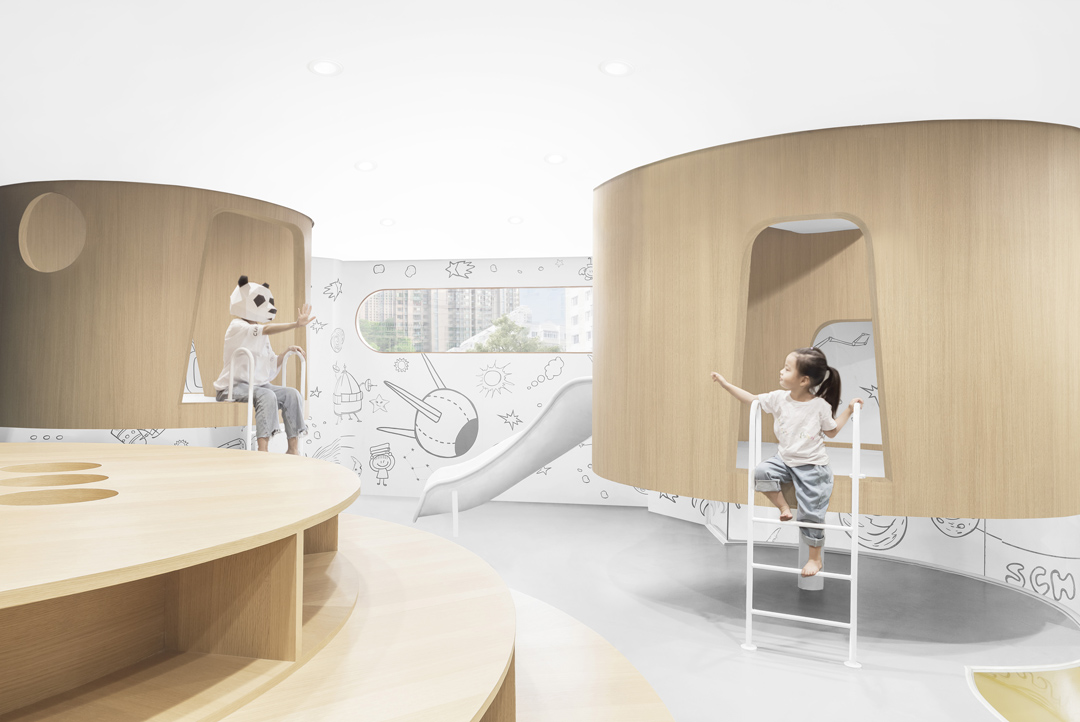
DESIGN METHODS
The objective of this project is to create a multi-functional space where children and teachers can explore, play, live and learn together. Firstly, the original three-layer lines of the architecture have been analysed with the ground floor of the commercial store being reconstructed in a bid to create two distinctive areas with multiple correlations.
Ten cylinders of different sizes are meticulously placed in the two areas like those mushrooms scattered in the forest. This design not only improved compound character of the space but also provided an incentive for children to nurture their passion for exploration as well as spatial cognition.
Contemporary studies of children suggest that the importance of spatial cognition is on a par with that of verbal and mathematical skills. And the increased level of difficulty in space exploration is also conducive to increasing the size of the hippocampus and the number of nerve cells for children.
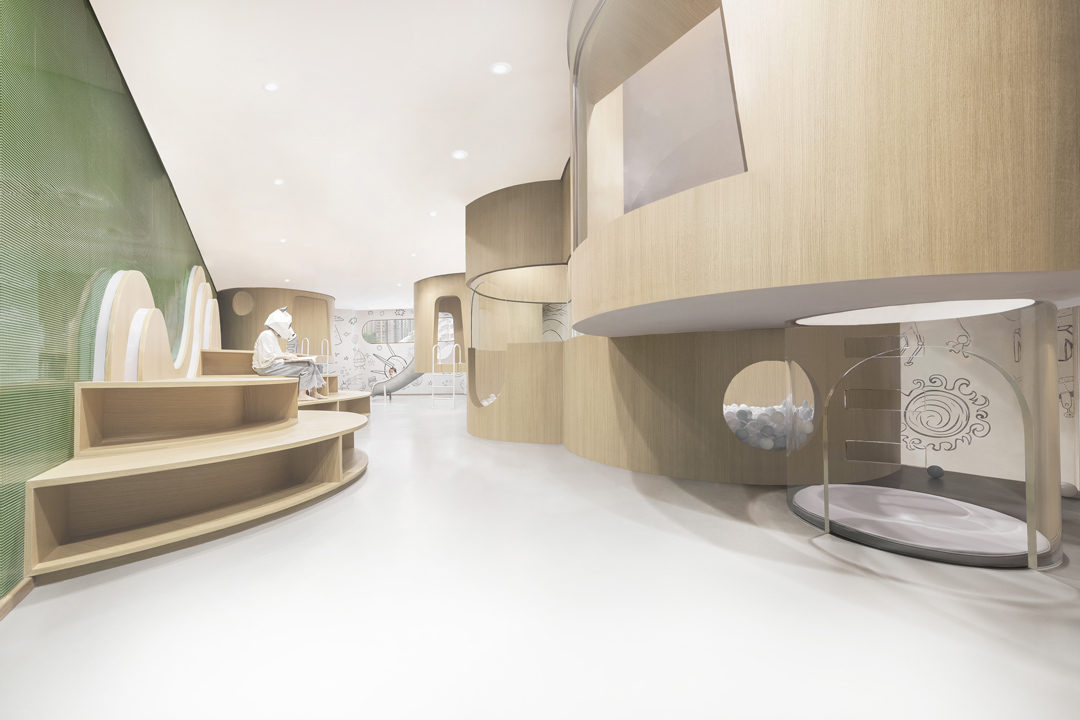
DYNAMIC LINES
The vertical and horizontal dynamic lines of the space were carefully planned with the aids of the cylinders where children are allowed to explore and play freely. At the same time, different functional attributes have also been incorporated into the space to meet the needs of children. For example, through the connection of each individual cylinder equipped with transparent rounded acrylic glass, children can observe the space from different angles while walking through various spaces, which can strengthen their physique and enrich their spatial experience.
A great deal of arcs has been made use of in the design. Its application can serve as a safety measure by which children will not easily get hurt during their exploration. Moreover, the tension of arcs is beneficial to the inducement of children’s imagination. The location of bookshelves is also carefully planned in a way that children and teachers are able to grab the book with ease, which can facilitate the communication between teachers and children. It is worth mentioning that the slide and ocean ball pool have always been the children’s favourite.
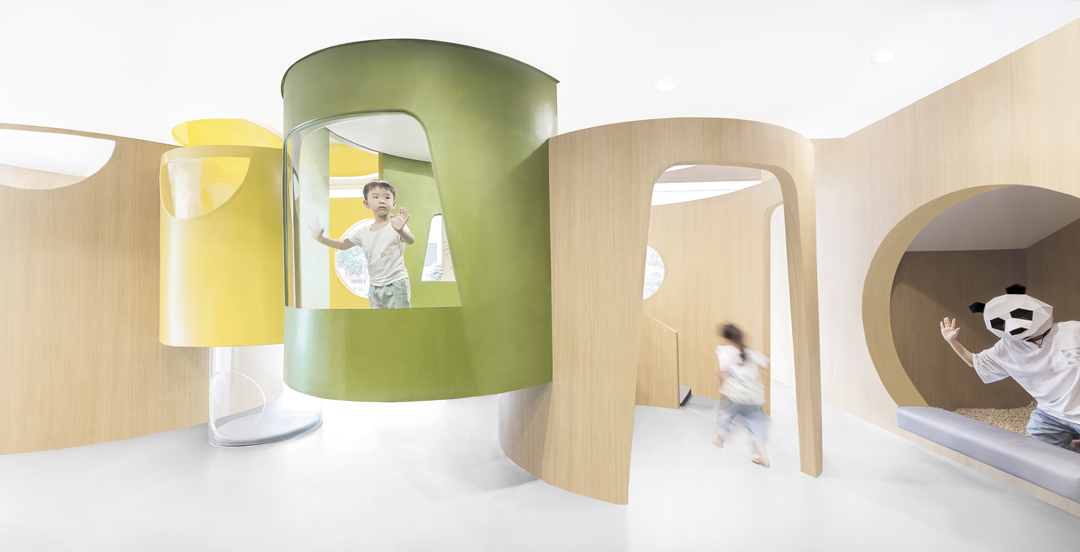
FLEXIBLE AND INTERESTING SPACE
The human scale of the space has been thoughtfully taken into account in hope that it can become a space where teachers and children can freely interact and play with each other. A giant apple-shaped glass floor is the touchstone of honing ‘little warriors’. The area becomes an ideal place for those “little warriors” to communicate with each other.
The stairs leading to the second and third floors are covered with thick yet soft cushion pad as a safety measure to reduce the risk of accidents when children are using the stairs. The classrooms in the space are separated by large curved glasses that guarantee sufficient illumination in each classroom while the effect of magnifying the visual space can be achieved thanks to it being transparent.
Additionally, a flexible classroom has been designed in the sense that it can be partitioned by a concealed sliding doors for simultaneous teaching activities. This design made a breakthrough in the traditional ‘classroom teaching’ in kindergartens through the adoption of flexible and interesting space for children and teachers. By doing so, children’s needs for participation and knowledge build up are respected whereas a great flexibility has been given to teachers for their teaching.
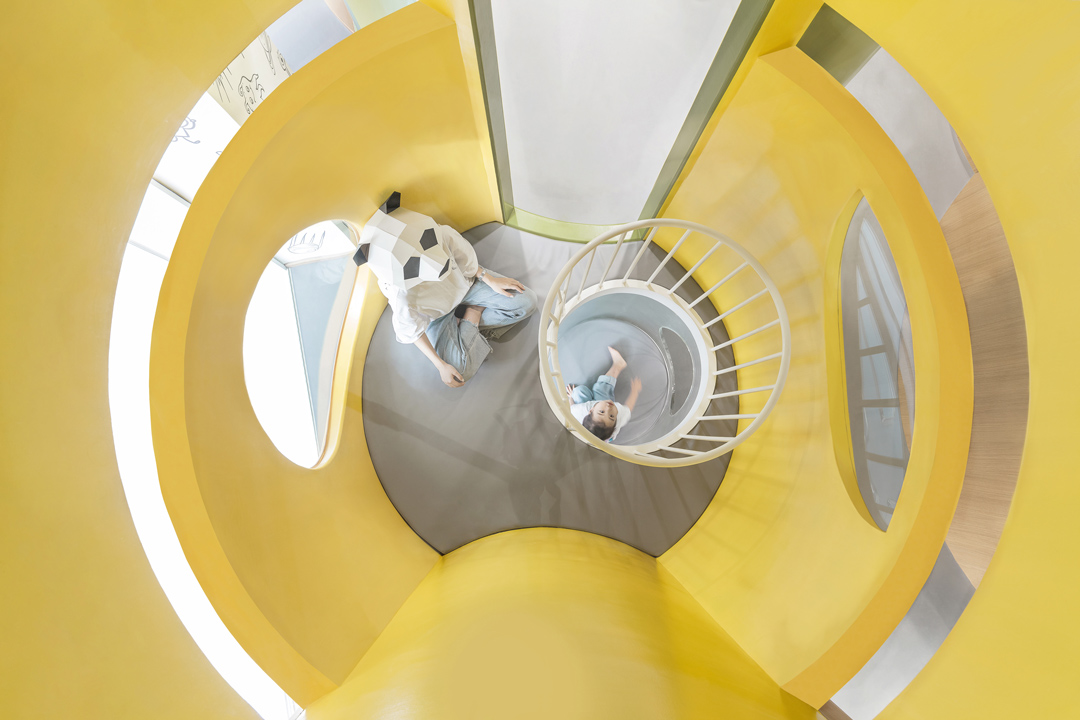
PROJECT DATA
Project Title
Poan Education
Location
Zhangzhou, Fujian, China
Gross Floor Area
470 metres square
Interior Design Firm
Artisan of CUN PANDA Architecture Design
Chief Designer
JC Lin
Assistant Designer
CUN PANDA Design Team
Project Planning
LELE Brand Strategy
Images
GL YANG



